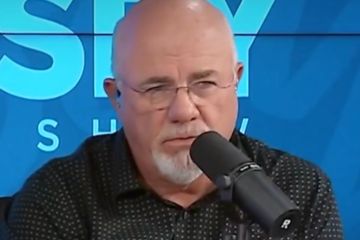Paying too much for electricity: Easy ways to cut your bill
After sharp price rises across Australia – in some states up to 20 per cent – Australian households are forking out record amounts on electricity.
There are plenty of obvious ways to immediately start cutting your costs, such as ditching the clothes dryer, going easy on the heating and airconditioning and switching your appliances off at the wall when not in use.
But if you haven’t already considering switching providers, there are still major bucks to be potentially saved.
How much could you save?
A typical three-person household could pocket as much as $1000 a year if they switched from the most expensive plan on the market to the cheapest, says Peter Marshall, product data manager at comparison website Mozo.
Those on standing offers — this might be the deal you struck when you first moved in years ago — are likely to be paying the most, he says.
The Australian Energy Regulator, which runs independent price comparison website Energy Made Easy, says about 33 per cent of electricity customers in Queensland, NSW, the ACT, Tasmania and SA are paying too much by remaining on standing offers.
Other reasons you might be paying too much
Some people believe they lack the information to find a better deal, or simply get overwhelmed by the task, according to the regulator.
But remaining on a standing offer can be a money-sucking decision. For example, you may not realise the fixed benefit that applied when you took the initial offer, such as a pay on time discount, has now lapsed.
- Related: New initiative to save residents money
- Related: $3 a year to run this house
- Related: Beat your bills with a smart system
Or you may be on a tariff that no longer suits the way you lose your electricity. Perhaps you might be energy efficient, but on closer inspection find your deal comes with a high daily charge, but a low usage charge.
Understanding your bill
Marshall says there are two major components of any electricity bill: the daily supply charge and the usage charge.
Both can vary from retailer to retailer, and from plan to plan.
The daily supply charge – aka the cost of getting electricity to your place – is also sometimes referred to as the service charge or fixed charge.
“A lot of plans are up to $1.30 a day so it’s a fair portion of your energy bill that goes into this,” says Marshall.
How to compare offers
First, contact your energy retailer to see what kind of deal you’re on, and whether they can offer you something better, says Australian Energy Regulator chair Paula Conboy.
After that, with your most recent bill in hand, it’s worth going to website Energy Made Easy and plugging in the details on your bill (if you’re in Victoria, visit Victorian Energy Compare).
“But just like when comparing plans with a mobile phone, price isn’t always everything,” says Conboy.
“Don’t get confused by discounts – there can be a lot of terms and conditions associated with offers that mean they are sometimes not as cheap as they first appear. It’s important to ask questions and not feel pressured into signing anything until you are comfortable.”
So what’s the catch with discount deals?
Marshall says some discounted offers may come with an artificially inflated daily supply charge, but the discount itself may only apply to your usage charges.
Other deals may require you to pay on time – great if you’re good at paying in timely fashion, but pricey if you don’t. “You just need to be realistic about what you think you can commit to,” says Marshall.
“If you get a plan that’s got reasonable supply charges and usage charges and you have a great discount, then that’s fantastic.”
Likewise, he recommends looking beyond a $50 or $100 discount offered on your first bill to see if it’s a savvy deal over the longer term.
Other considerations
Are you willing to pay for green power? Do you have a solar set-up and want to receive money for feeding power back into the grid?
Marshall notes that in the past few months some retailers have improved their feed-in tariff offers.
Finally…
Once you have the best deal in hand, go back to your current provider. Hopefully they can match, or even undercut their competitors.
If not, walk.
Other quick questions to ask
1. Do your charge exit fees? (Ask your current provider before switching.)
2. Is there a minimum contract period?
3. How long does the discount last for? And what does it apply to – the whole bill, or just usage or supply charges?
4. Is there a discount for paying by direct debit?
5. Can I get a discount by bundling my electricity and gas?
We recommend
We thought you might like
States
Capital Cities
Capital Cities - Rentals
Popular Areas
Allhomes
More







